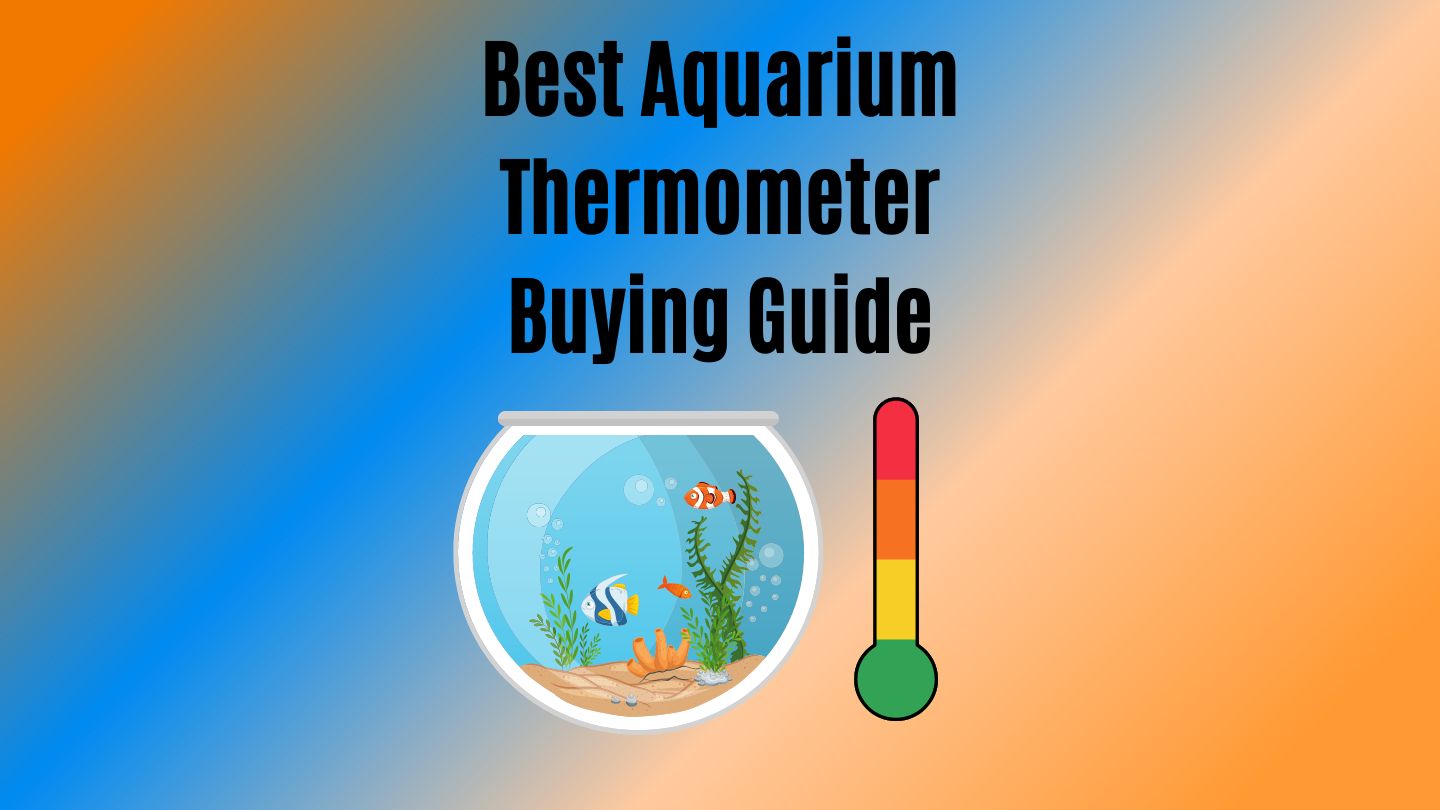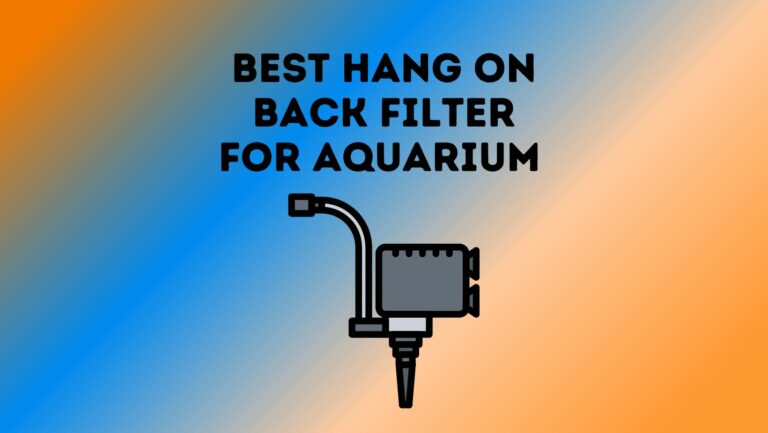
An aquarium thermometer is a crucial part of maintaining an optimal environment for your fish and other aquatic creatures.
Aquatic animals are highly sensitive to temperature and often require a very specific temperature range which should never vary by more than a couple of degrees at most.
Therefore, the ability to regularly and consistently monitor the temperature inside your aquarium is essential for ensuring the health of your pets.
However, there are many different kinds of aquarium thermometers, so it can be difficult to determine which one will be the best fit for your fish tank.
Best Aquarium Thermometer Buying Guide
So, as you can see, aquarium thermometers come in many different forms. If you’re still in the process of deciding which type of thermometer will work best for your aquarium, this buyer’s guide will help to point you in the right direction.
Fresh or Saltwater?
The type of water that your aquarium contains has the potential to impact what kind of thermometer you can use.
Luckily, the thermometers on our list are all suitable for both freshwater and saltwater aquariums, so no matter what kind of fish you keep, you can use any of the thermometers listed above to measure your environment’s temperature.
Digital, Analog, or Strip?
Thermometers are much like clocks in the sense that choosing one involves making the decision between a digital or analog display.
As with clocks, a significant part of this decision will be dictated by personal preference, but there are also practical considerations to be made.
Many people find analog thermometers more difficult to read than digital models. Digital thermometers may also be slightly more accurate because they have the ability to provide readings including decimal places.
However, there are also drawbacks to digital thermometers. For one thing, most of them can’t be exposed to water directly, so measurements need to be taken using a probe.
The exception to this, of course, are digital thermometers that use temperature sensors to measure the temperature of the water through the aquarium glass.
Another thing to consider is the fact that digital thermometers require batteries to work, which is not the case with analog models.
Manufacturers may include a battery with the purchase of their thermometers, but the battery will need to be replaced in any case once it runs down.
There is actually a third option: adhesive strip thermometers.
In theory, these are easier to read than traditional analog thermometers and eliminate the probe and battery issues that come with many digital thermometers.
However, in practice, it is thought that these thermometers may be slightly less accurate and are often less easy to read than advertising suggests.
Accuracy
Accuracy is something that we’ve already touched on in the section above, but it’s the single most important factor to consider in an aquarium thermometer.
After all, if the accuracy of your thermometer is compromised, you risk the temperature of your aquarium rising above or falling below the limit and affecting the health of your fish.
Significant temperature deviations can even be fatal, so this needs to be avoided at all costs.
As we mentioned previously, digital thermometers are considered to be the most accurate aquarium thermometers on balance.
This is because, unlike analog and strip thermometers, digital thermometers can provide readings to an accuracy of 1 decimal place, or 0.1°.
In second place when it comes to accuracy is the traditional or analog thermometer.
While this thermometer cannot provide readings to quite the same level of exactitude as digital thermometers (at least, not visibly), they do provide enough accuracy to ensure a safe temperature range for your fish and other aquatic creatures.
The markings provided on analog thermometers usually allow for readings that are accurate to 1°.
Strip thermometers are generally considered to be the least accurate type of aquarium thermometer because they rely on thermal color reactions to provide temperature readings.
Often, these colors do not reveal themselves clearly, or may even fail to appear altogether.
However, this problem can be minimized by using more than 1 strip thermometer to double-check accuracy.
Since strip thermometers usually come in packs of several, this is a relatively easy precaution to take.
Ease-of-Use
The easier your aquarium thermometer is to operate, the easier it will be for you to ensure the health and safety of your fish.
Therefore, ease-of-use is a crucial factor to prioritize when purchasing an aquarium thermometer.
The two main features to consider here are temperature display and settings.
It goes without saying that you’ll want the temperature reading on your thermometer to be easy to read so that you can clearly understand the temperature conditions inside your aquarium.
A large display screen is preferable since the reading will be easier to see from far away.
A transparent screen will also usually be easier to read due to the increased contrast and has the added benefit of not obscuring the inside of your aquarium.
In terms of settings and controls, the fewer buttons the better because too many settings can make the thermometer complicated to use.
Essential controls include a power button (ideally the same one to power on and off) and buttons to switch from Celsius to Fahrenheit.
A useful additional setting is a temperature range function that lets you set the optimal temperature for your tank and gives a warning when this temperature is exceeded or dropped below.
Adhesion/Attachment
There are various different ways of attaching your aquarium thermometer to your fish tank. Which adhesion or attachment method you choose will come down to what you prefer and what your aquarium will allow.
Some aquarium thermometers do not require any attachment at all. This will only usually be the case with analog thermometers with floating functions that allow them to float freely in the water.
The only real downside to this kind of thermometer is the fact that it can be more difficult to read since it’s moving around.
However, in most cases, floating aquarium thermometers will also come with some kind of attachment feature (usually a suction cup) so that you can still attach it to the glass of the aquarium if you want. This is likely to make the reading process much easier.
Digital thermometers will either use suction cups or adhesive strips to adhere to the surface of an aquarium.
There is no real consensus as to which adhesion method is best and the quality of suction cups and adhesives will vary between manufacturers.
However, non-functional suction cups can often be fixed by cleaning, whereas when an adhesive strip stops working, it will usually need to be replaced altogether.
Strip thermometers, of course, only use adhesive strips for attachment.
OUR TOP PICK
EDITORS CHOICE
BEST VALUE
Frequently Asked Questions
Do I really need an aquarium thermometer?
The short answer to this question is: yes. Whether you have a basic betta fish aquarium or an extensive saltwater aquarium ecosystem, you need a thermometer. Fish and other aquatic animals are sensitive creatures that require specific environments in order to thrive.
Without a thermometer, you won’t be able to accurately check the temperature of your aquarium. If overly high or low temperatures go unnoticed, your fish may become sick or even die.
What temperature should my aquarium be?
This depends entirely on what kind of aquatic animal or fish you keep in your aquarium since different creatures require different temperature ranges.
For example, tropical fish require warmer water temperatures (usually between 75 and 80°F). Meanwhile, cool water fish, such as goldfish, do better in lower temperatures of 60 to 75°F.
Generally speaking, cool water fish can survive a little more flexibility than tropical fish and are usually able to live in slightly warmer or colder temperatures.
Tropical fish are more sensitive and will become unwell more quickly outside of their ideal temperature range.
Regardless of whether you own tropical or cool water fish, however, it’s safest not to deviate from their optimal temperatures at all.
Other aquatic animals, such as crabs, turtles, and jellyfish, for example, will have other specific temperature requirements that will need to be verified individually.
How do I know if my aquarium thermometer is accurate?
It’s all very well for a manufacturer to advertise their thermometer as accurate, but malfunctions do occur from time to time, so how do you verify whether your thermometer is providing accurate temperature readings?
Well, there are a couple of ways you can go about this. As we briefly mentioned earlier, you have the option of using more than 1 thermometer.
This may not be ideal from a cost or convenience standpoint, but it does mean that you have 2 readings to work with rather than just 1.
This can help you to identify any potential inaccuracies from differences in temperature readings, although further difficulties may then arise when it comes to working out which thermometer is the accurate one (a third thermometer may need to come into play).
Because strip thermometers, for example, usually come in packs, they are a good choice for doubling up.
Another easy method for checking the accuracy of your aquarium thermometer is to use the thermometer against something that you already know the temperature of.
For example, placing your thermometer into or against a glass of ice cubes should yield a reading of 0°C or 32°F. If the reading is off, then you know your thermometer is inaccurate.





